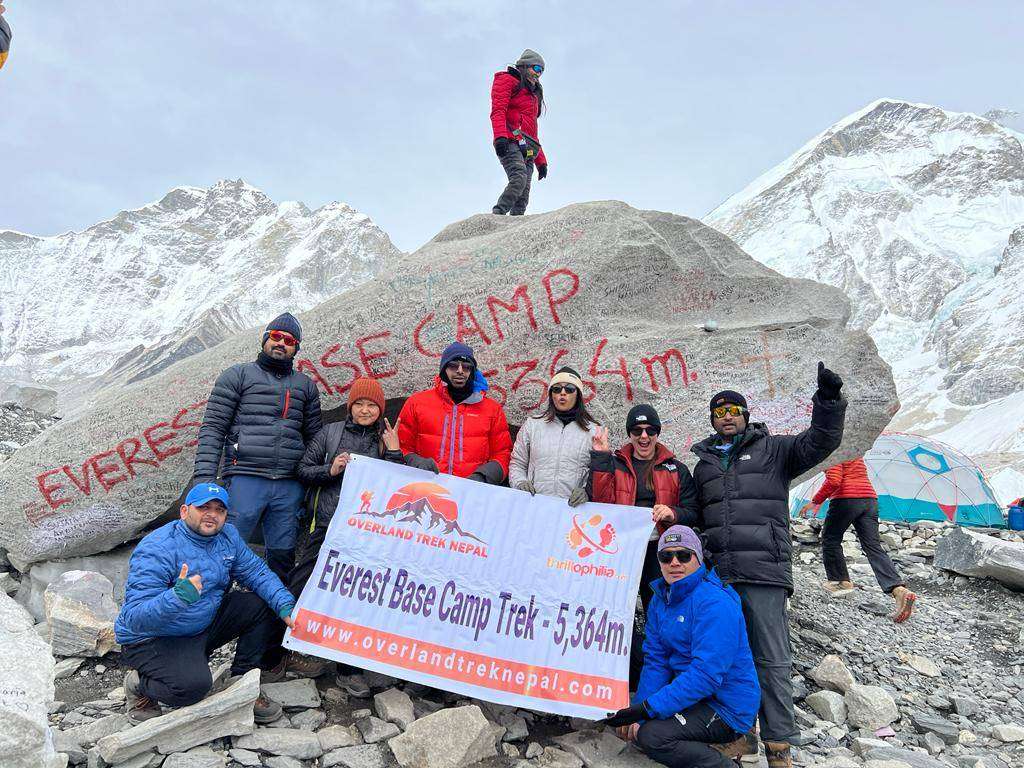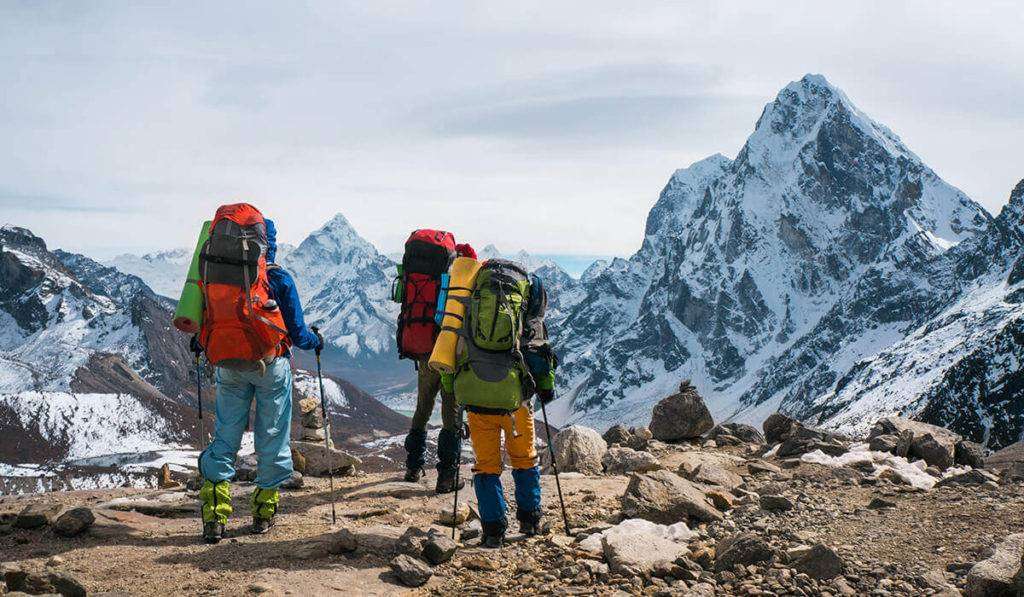Are you planning to do the Everest Base Camp Trek? Here I am going to explain about 7 Essential Things to Know While Travelling to Everest Base Camp. At 5364 meters (17926.6 feet) above sea level, reaching Everest Base Camp is no small feat. However, The 12-day trek maintains an elevation above 4000 meters (13123 feet) through villages with teahouse accommodations, so it’s not as scary as some may think. Also, Walking to base camp is a fun adventure. the following suggestions are meant to improve your experience by offering useful information to make upcoming ascents more comfortable and to allay any fears you may have about the walk.
1. Training ahead:
Preparing for the Everest Base Camp trek requires a solid foundation of physical fitness and endurance rather than technical climbing skills. While prior altitude experience is not mandatory, ensuring excellent strength and conditioning is crucial for a successful and enjoyable journey. It is recommended to engage in intense physical exercises at least four to five days a week for three to eight months leading up to the trek. This includes walking uphill on a treadmill or using a stair-master for one to two hours per day, gradually building up to carrying a 10-kilogram backpack.
Additionally, incorporating weekly longer hill training sessions, involving 4 to 7 hours of walking with elevation gains of 1,000 meters, is emphasized. This holistic approach, supplemented with gym workouts, adequately prepares individuals for the trek. For those without access to hills or mountains, adding extra weight to the backpack during longer walks on a stair-master can serve as an alternative. Seeking guidance from the organizing team is encouraged to ensure proper preparation for this remarkable adventure.

2. Prepare Your Mind:
For those preparing for the Everest Base Camp trek, embracing the mountain lifestyle is essential. Especially in light of the potential challenges of camping, bugs, dirt, makeshift showers with baby wipes, and outdoor toileting. However, such an adventure requires an undying devotion to the great outdoors and a high degree of comfort in challenging environments. During the trek, lodging is provided by small tea houses run by the Sherpa community in the area. These establishments offer simple, twin-shared rooms. Except for those who choose to sleep in a tent for one night on their Sleeping in Base Camp Itineraries, sleeping indoors is the norm. Getting to know and appreciate the simpler side of mountain living improves the overall experience for those embarking on this incredible journey.
3. Obtain the Proper Gear:
For a successful trek to Everest Base Camp, having the appropriate equipment is essential. While a comprehensive list isn’t covered here, A kit containing the items that are highlighted will be sent out upon trip enrollment. Primarily, foot comfort must be prioritized for the twelve to thirteen-day trek’s lengthy daily walks. You must purchase well-made, water-resistant hiking boots and break them in well before traveling to Nepal.
A premium down jacket is another essential, and the degree of down determines how warm it is. When in doubt about the jacket’s specifications, it is advisable to consult a professional. Wearable in the mornings and evenings, this jacket is essential for ensuring comfort levels. However, throughout the journey, and is a must when climbing Kala Patthar to enjoy the breathtaking views of the surrounding area.
4. Staying hydrated is essential:
Being hydrated is essential for attaining success when trekking at altitude because the body loses water more quickly there. 4 to 5 liters of water per day are advised to prevent altitude sickness and guarantee health during the trip. A smart strategy is to drink one liter before beginning the day’s hike and then pack two liters in your backpack to finish before lunch. Meeting the hydration goal is made easier by filling up the bladder with an extra two liters during lunch and continuing to drink regularly throughout the rest of the day. Drinking four to five liters of water a day may sound like a lot, but it’s necessary for acclimatization and general mountain success, especially at higher elevations where dehydration sets in faster.

5. Maintain a pace:
You must walk at a certain pace while traveling! Getting from one point to another while doing as little as you possibly can is your primary objective when traveling at high altitudes. As a result, you should walk the entire trek at a leisurely pace. Keeping a manageable heart rate throughout the trek is very important.
6. Know your headaches:
One of the earliest indications of altitude issues may be a headache. Small headaches are common, so don’t let them stop you from hiking or cause you any concern. To help them better monitor your well-being, you should let your guide know if you experience any headaches. Stop climbing or even descend if your headache gets worse or you experience other symptoms of altitude sickness. If left unchecked, altitude sickness can be very dangerous. We can usually make arrangements for additional days on the mountain if necessary.
7. Take Sun Protection Measures:
There is less UV protection the higher you ascend in altitude. There are days when the sun is particularly harsh and its strong rays can cause solar radiation. Not only can avoiding the sun helps prevent wrinkles and skin cancer, but it can also increase your chances of finishing the hike. It is dehydration that follows sunburn. As we’ve previously stated, one of the key causes of people’s failure in the mountains is dehydration at altitude. Of course, there may not be any protection from those strong rays when you walk during the day, but you still need to exercise caution to reduce those harsh emissions.
It’s crucial to wear factor 50 sunscreen and to reapply it all over the day! However, You shouldn’t try to get a deeper tan on vacation in the mountains. Even, if you want to wear it back home! Wearing long sleeves and pants as well as a sun hat will help shield you from the sun.

Conclusion: Travelling Tips for EBC Trek in Nepal
Finally, traveling to Everest Base Camp is an incredible experience. Also, these detailed suggestions provide a roadmap for a successful and enjoyable trip. Overland Trek stands out as the best Trekking agency. Also, demonstrate our commitment to making sure participants are prepared for the challenges ahead by taking a meticulous approach. Adventurers who opt for us not only receive a trekking experience. Also, a helpful companion committed to making the trek to Everest Base Camp an enjoyable and comfortable accomplishment.
